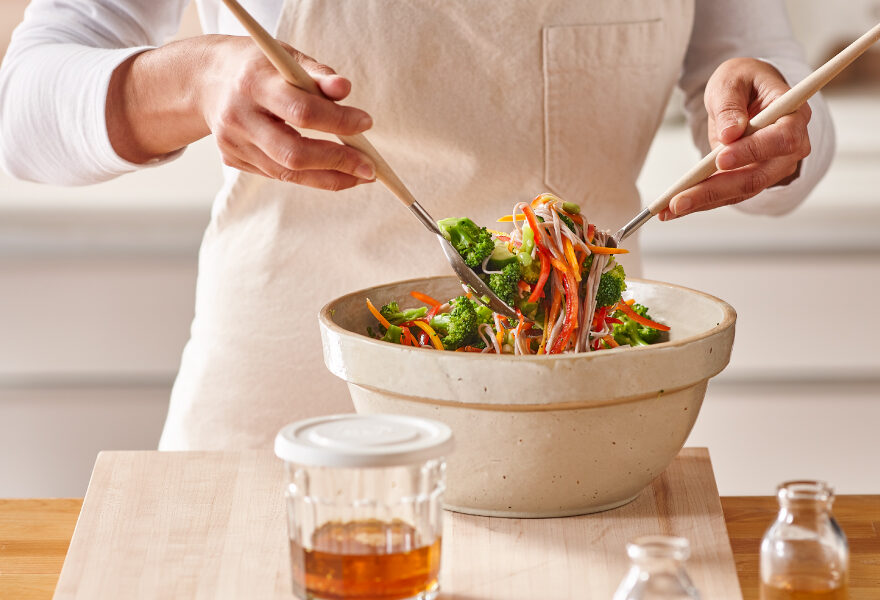Nancy Samson
Chocolate maker


The flavours of maple syrup are expressed in subtle accents of caramel, berries, and wood, lending it unique gastronomic qualities. It brings elements to your cooking that are unlike those of any other ingredient, such as harmony, stimulation, fragrance. It’s a great way to encourage young and old alike to eat those nutritious foods that are sometimes more difficult to appreciate, like vegetables, fish, tofu, and milk.
There are five basic tastes: salty, sweet, sour, bitter, and umami. Each has distinctive properties.
Salt is a preservative that regulates hydration and amplifies the sense of taste; sweet provides caloric nutrition and pleasure; sour reveals taste and promotes absorption; bitter stimulates digestion, and; umami (savory, or tasty in Japanese), with its flavours of broth or meat, delivers a lasting sensation to the mouth.
We all know that taste and smell are intimately linked and mutually responsible for the gustatory experience. When you put food in your mouth, taste receptor cells in your tongue immediately go into motion. The taste buds, located on the papillae, generate a nervous impulse that is transmitted to the brain in less than 150 milliseconds. There, these taste signals intersect with tactile signals from the mouth (consistency and temperature) and olfactory signals from the nose (aromas), in a formula that results in 80% of taste perception relying on smell! And that doesn’t even account for the other senses also called upon, such as sight (a well-presented dish makes it more inviting) and hearing (think of the pleasurable crunch of chips). With these countless receptors flashing stimuli to the various zones of the brain, we can safely say that taste is essentially “all in your head”.
To make maple syrup, you must heat the tree’s sap. This triggers the first Maillard reaction. Observed by the French chemist Louis-Camille Maillard in 1912, it’s the interaction between amino acids and sugar when food is subjected to high temperatures. It causes, among other things, the browning and caramelization of food when it’s cooked. One hypothesis has it that the Maillard reaction creates the perception of umami in maple syrup. This would be one explanation for why maple syrup enhances the taste of food so well.
The flavour of any dish will be uniquely enhanced when maple syrup goes into its preparation and is heated. It reacts with amino acids such as those found in the standard ingredients of Japanese cooking, mirin and soy sauce. Furthermore, maple syrup contains the aromatic compounds vanillin and syringaldehyde, also found in smoked products (e.g. bonito flakes), widely used in Asian cuisine. Soy sauce marries brilliantly with maple syrup because they share two aromatic molecules, furfural and sotolon. This is the Law of Attraction: Like attracts like! Many other ingredients common to Japanese cooking are likewise “chemically compatible” with maple syrup, cementing their culinary marriage made in heaven.
What mysteries lie behind the exquisite, sweet taste of maple? Tradition. Memories. Emotions. But there’s also a world of innovation and versatility that constantly reveals itself, day after day, in wonderful culinary creations. Maple, in all its forms, has an open invitation to the greatest tables, as it never fails to bring with it a hint of audacity and a host of pleasures. And many have adopted it as their own: Chefs, bakers, pastry artists, brewers, winemakers, ice cream makers, and caterers use maple with a passion, all because it’s an exceptional ingredient that invites them to reinvent themselves. Incredible Maple!
Maple is a special addition to any recipe, from appetizer to dessert. Find one that’s perfect for you or your occasion!